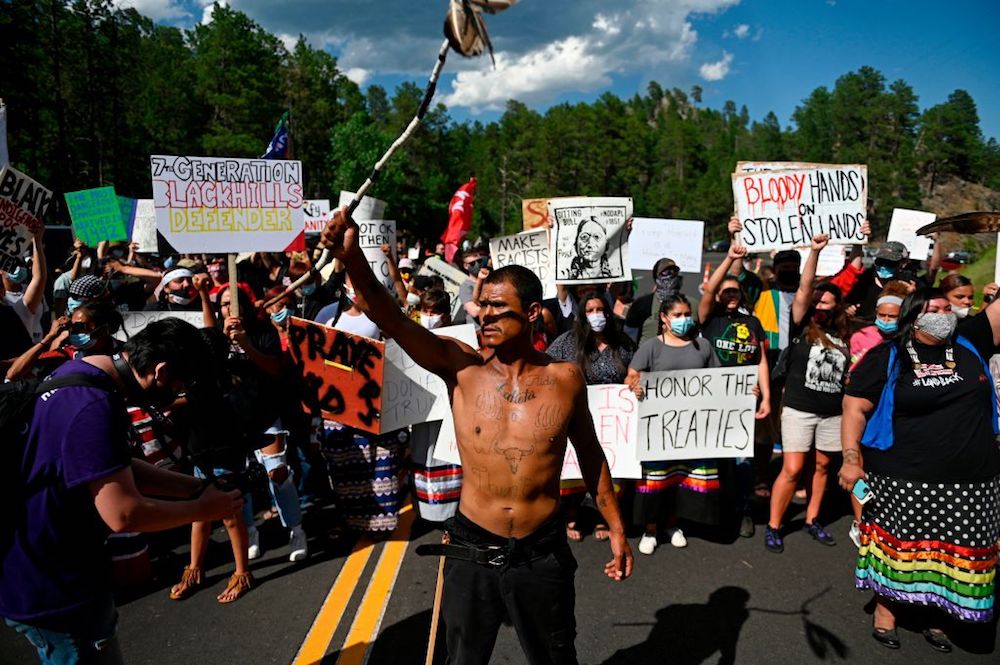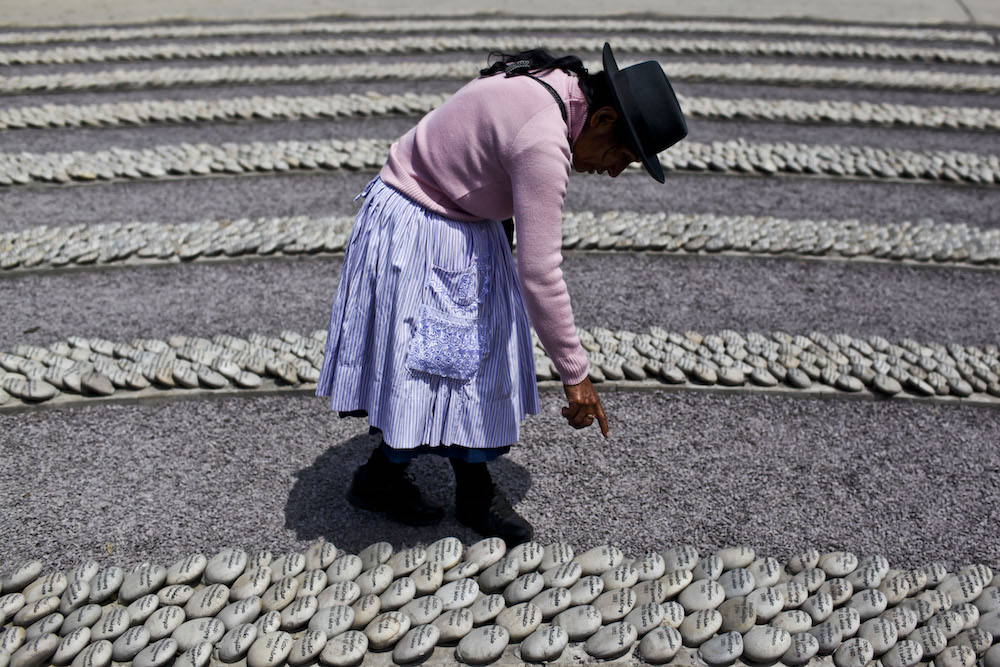Why We Need a Truth Commission on White Supremacy

President Joe Biden centered his 2020 presidential campaign on a promise to restore the soul of the United States. In his November 9, 2020, acceptance speech, given in the wake of racial justice protests and a bitter election, Biden reiterated, “This is the time to heal in America.” He repeated this message in February, after the Senate impeachment trial that acquitted former President Donald Trump from accusations of inciting the January 6 insurrection at the Capitol.
Biden has made important first steps, including bipartisan outreach. But to meet the moment, Biden needs to think big, particularly if he wants to address the root causes of White nationalism and systemic racism, two key issues underlying the country’s divisions.
One place to look for models of social repair is in the experience of other countries who have sought to heal after periods of strife, a process sometimes referred to as transitional justice. The framework encompasses mechanisms such as trials, truth commissions, memorialization, and educational initiatives aimed at redressing injustices, holding those responsible accountable, and creating the foundations for a society where such wrongs will not be repeated.
Well-known examples include South Africa, where a groundbreaking truth commission investigated systemic racial inequalities and human rights violations under the National Party’s apartheid regime between 1960 and 1994, and Cambodia, the site of a U.N.-backed tribunal about which I have written and where I testified about atrocity crimes committed by the Khmer Rouge from 1975 to 1979.
During the 2020 Black Lives Matter protests, the idea of a truth commission centered on structural racism in the U.S. gained traction. There have also been renewed calls for reparations for Black Americans, including H.R. 40, a reparations bill being considered by Congress. And some people are now proposing a Capitol Insurrection Commission, similar to the one that investigated 9/11.
These are important proposals. But they don’t encompass the full sweep of the history that has given rise to mass human rights violations and led to White nationalist violence and other racial divisions in the U.S.
My proposal for a Truth Commission on White Supremacy and Its Legacies would do so.
A good place to start this reckoning is 1492, the year Christopher Columbus “discovered” the Americas. The importance of this date was underscored by a sign held by a Native American protestor at then-President Trump’s July 2020 campaign rally at Mount Rushmore, a national monument constructed on land sacred to its original occupants, the Lakota Sioux. It read, “The most dangerous immigrants arrived in 1492.”
Beginning with 1492 focuses attention on the start of a global quest for resources that involved European colonization, the transatlantic slave trade, and the genocide, mass death, and dislocation of Indigenous peoples. Early European colonial settlers needed land. To get it, they displaced and took land from Indigenous populations, which had been decimated by smallpox and other diseases brought by colonizers. To work the land, colonial settlers required labor, which enslaved peoples were forced to provide.
By the end of the 1600s, British settlers in North American colonies had already established the foundations of an elaborate system of White supremacy. They legalized chattel slavery and legitimated their dominance with an ideology based on racial hierarchy, patriarchy, and related racist and gendered stereotypes. After the U.S. formally gained independence in 1783, this racial order continued to be enforced by state power, fear, and terror, ranging from slave patrols and legalized brutality to massacres and forced relocations.
While challenged by abolitionists, this system of White supremacy and enslavement held sway, especially in the U.S. South, until the Civil War. At this juncture, enslavement was abolished but White supremacy was maintained through Jim Crow apartheid. Into the early 20th century, White supremacy was supported in many cases by state and national laws, a legitimating ideology, now under the guise of scientific racism, and force, including the Ku Klux Klan. As the U.S. expanded its territory and population, and immigration increased, a wider range of non-White groups were disempowered and terrorized by this system.
Asian Americans and Latinx activists struggled for change along with Native Americans and Black Americans for decades, but it wasn’t until the Civil Rights movement of the 1950s and ’60s—more than 350 years after the founding of the Jamestown colony—that this formal, state-sponsored system of White supremacy began to be toppled.
In its contemporary form, White power is maintained through less overt, but still pernicious, systems of structural racism. These systems continue to be the focus of national conversations sparked by widespread protests after the murder of George Floyd, a Black man, by Derek Chauvin, a White police officer. Structural racism encompasses an interrelated set of policies, institutions, practices, stereotypes, and norms that operate across a number of domains (education, health, economics, law, and so forth) to perpetuate inequality, discrimination, and White power.
Until we reckon with this history fully, the U.S. will never heal. A Truth Commission on White Supremacy and Its Legacies is a promising place to begin this long-term process of social repair, a strategy I suggest in my 2021 book, It Can Happen Here: White Power and the Rising Threat of Genocide in the U.S.
Transitional justice efforts elsewhere have shown the importance of dialogue and inclusion in such a process. Along these lines, a U.S. Truth Commission could be led by senior, retired Democrats and Republicans who are respected across the aisle. This commission’s purview would be expansive, beginning with the history of the displacement and mass death of Indigenous peoples and the enslavement of and continued disenfranchisement of people of African descent throughout the Jim Crow era.
A transitional justice mechanism is urgently needed for the country to heal—and to build the foundations for a more equitable, just society.
But it should also grapple with other human rights violations linked to White supremacy, including lynchings and disproportionate numbers of police killings of Black people, the persecutions of Asians that date back to 19th-century “yellow peril” fears, attacks on Muslim and Jewish communities, and discrimination and violence against those in the Latinx community.
Hate crimes and White power extremist attacks against these groups increased under the Trump administration. Some individuals and communities continue to be victimized, as illustrated by a surge in anti–Asian hate crimes fueled in part by Trump’s racist and xenophobic rhetoric, such as him repeatedly calling COVID-19 “the China virus” and “kung flu.”
Among other things, the proposed commission would take testimony and make recommendations for grappling with White supremacy in the U.S.: from contemporary White power extremism to less obvious forms of systemic racism. These recommendations might include institutional reforms, reparations, formal apologies, a national archive, and educational programs.
In addition to the efforts in South Africa and Cambodia, there are other models of how such a commission might operate, including a recent Canadian Truth and Reconciliation Commission, which focused on abuses—ranging from sexual and physical violence to cultural genocide—committed in Indigenous Residential Schools (which also existed in the U.S.). As another example, in 1988, the U.S. passed the Civil Liberties Act, which entailed an apology and US$20,000 reparation payments to Japanese Americans incarcerated during World War II.
One way to augment such a U.S. national commission would be to supplement it with a Legacies of White Supremacy Fund that would provide resources to states, cities, and communities that wish to establish more locally attuned transitional justice efforts. These sorts of grassroots initiatives have been used to great effect in a number of sites of transitional justice, including Cambodia, where the tribunal has been accompanied by genocide education and intergenerational dialogue.
We already have U.S. examples of small-scale initiatives in places like Greensboro, North Carolina (site of a White supremacist massacre), and Maine (where Native Wabanaki children were removed from their families). And new efforts are underway in Tulsa, Oklahoma (site of a 1921 massacre of Blacks), and Maryland (where racial lynchings took place), among other places. Such initiatives are critical to making transitional justice more meaningful and adapted to local histories of White supremacy and its legacies.
Transitional justice won’t fix everything. Discussions of violent pasts are contentious, and some voices might be heard less than others. The process can also become mired in politics, as I have discussed in the context of the Cambodian court. But the hard conversations can help initiate a long overdue process of social repair.
In this regard, the Truth Commission and Legacies Fund I am proposing would represent a significant step the Biden administration could take to help the U.S. begin to confront the legacies of White supremacy. Such a transitional justice mechanism is urgently needed for the country to heal—and to build the foundations for a more equitable, just society.

































